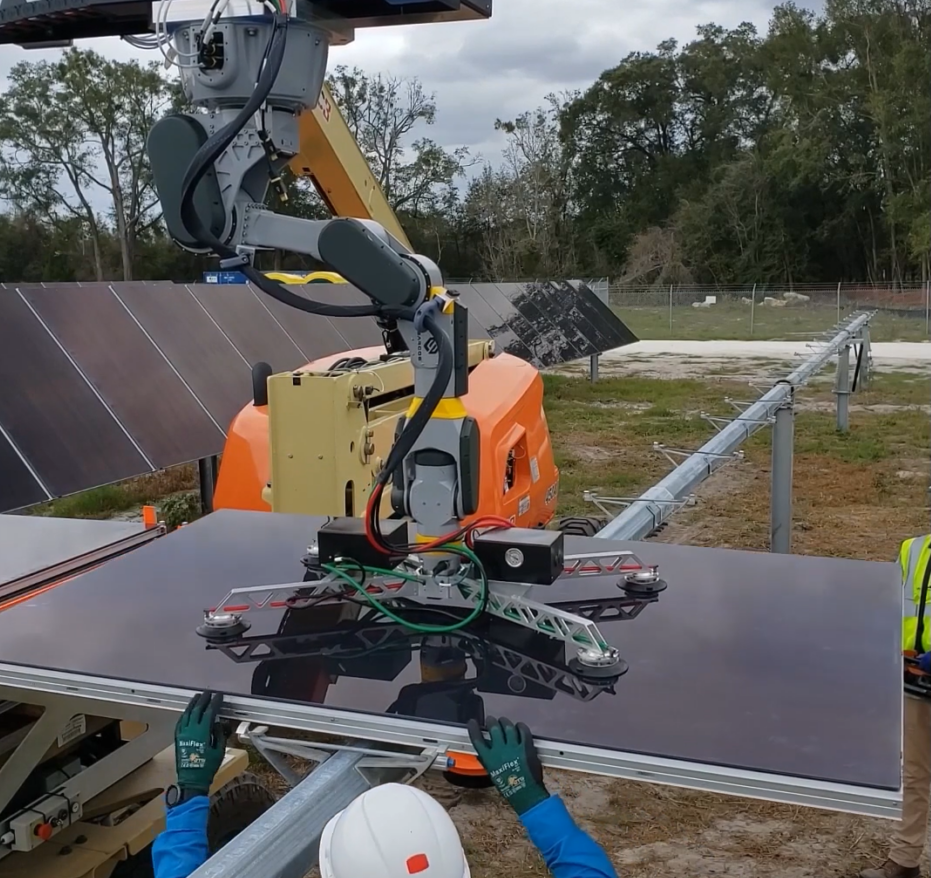Industrial robotic systems manufacturer Sarcos has developed a solution to automate and streamline the construction of large-scale solar plants.
The US-based company recently achieved the final validation of its prototype solution in the Outdoor Autonomous Manipulation of Photovoltaic Panels (O-AMPP) project, funded by the US Department of Energy Solar Energy Technologies Office. It did not disclose the exact location of the pilot installation.
“The solar construction industry is facing unprecedented labor shortages while simultaneously facing an increase in demand for solar energy,” said Trent Mostaert, vice president of industrialization at construction engineering company Mortenson, a partner in the O-AMPP project. “We believe the O-AMPP system can address these challenges while improving safety, productivity, and efficiency for our workers. It will also enable solar project developers to scale output and production to the levels needed to achieve the Energy Department’s 2030 and 2050 renewable energy goals.”
The proof-of-concept robotic system consists of an autonomous working vehicle (AWV) featuring Sarcos’ Guardian XM robotic arm and an autonomous delivery vehicle (ADV). The solution uses cameras to identify where the PV panels need to be installed. The robotic arm then autonomously lifts up the panel using a vacuum system and places it approximately where it needs to be clamped to the mounting structure. “The arm then goes into a special mode where the person clamping the panel can easily move that panel however they need, in order to align it and attach it into the panels,” Sarcos explains in a video on its website.
The company did not share details on whether the vacuum system lifting mechanism would lead to mechanical stress on the PV modules. It says that the robotic solution’s benefits include lower soft costs for projects, projection multiplication, improved construction timelines and quality, and a safer worksite that reduces the risk of lifting and fatigue-related injuries.
The O-AMPP project started in 2021 and Sarcos expects to commercialize its solution by 2024. “Achieving this market validation and field test milestone is a mission-critical step on our path to commercializing our robotic solar field construction solution and, ultimately, enhancing safety and productivity in the solar field construction industry,” said Kiva Allgood, CEO of Sarcos.
Array Technologies supplied the tracker system used in the pilot project. Other industry partners included equipment manufacturer JLG Industries, automotive company Pratt Miller, and Mortenson.
This content is protected by copyright and may not be reused. If you want to cooperate with us and would like to reuse some of our content, please contact: editors@pv-magazine.com.



1 comment
By submitting this form you agree to pv magazine using your data for the purposes of publishing your comment.
Your personal data will only be disclosed or otherwise transmitted to third parties for the purposes of spam filtering or if this is necessary for technical maintenance of the website. Any other transfer to third parties will not take place unless this is justified on the basis of applicable data protection regulations or if pv magazine is legally obliged to do so.
You may revoke this consent at any time with effect for the future, in which case your personal data will be deleted immediately. Otherwise, your data will be deleted if pv magazine has processed your request or the purpose of data storage is fulfilled.
Further information on data privacy can be found in our Data Protection Policy.